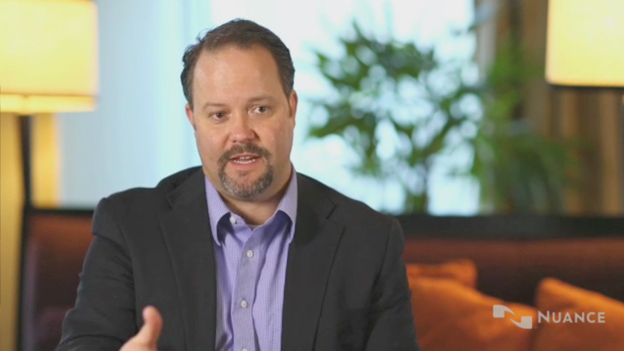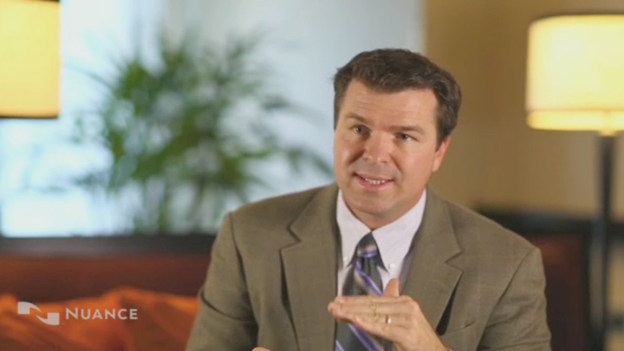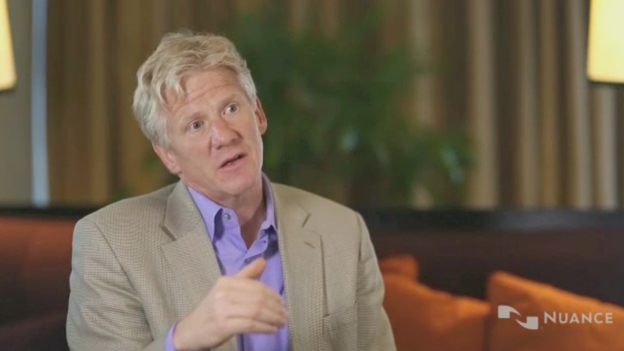BURLINGTON, Mass.--(BUSINESS WIRE)--Physicians today are under increasing pressure to produce more accurate, complete and compliant clinical documentation while trying to maintain a focus on patient care and satisfaction. In an effort to learn more about potential solutions that can alleviate physician frustrations with the clinical documentation process, Nuance Communications, Inc. (NASDAQ: NUAN) today shared findings from a recent study of physician attitudes toward clinical documentation technology and processes.
This study found a wide majority of practicing physicians (71%) report they would be more responsive to Clinical Documentation Improvement (CDI) clarifications if these were delivered in real-time within their normal documentation workflow in the electronic health record (EHR). Additionally, more than 80 percent of physicians say it is disruptive and time consuming when queries for information occur after they’ve documented in a patient chart or worse, after the patient is discharged. All believe that ICD-10 will make matters much worse.
The survey of more than 187 practicing physicians in midsize or large practices and hospitals found that a majority of U.S. physicians:
- See technology as a growing portion of how they do their jobs, and they want to be involved in technology decisions (97%), yet most were not involved in clinical documentation technology decisions for their organization (66% or more);
- Value information delivered at the point of care and would respond more frequently to requests for information well timed and within their natural documentation workflow (71%);
- Perceive traditional retrospective CDI queries as very disruptive to clinical workflows and the level of disruption increases with the passing of time after they’ve documented (83%);
- Find that any time they needed to “go back” and respond to a coding issue was disruptive and time lost (approximately 98%);
- Would invest time, see fewer patients and earn less money for 6-9 months to be deeply involved in clinical documentation technology evaluations and implementations (88%).
“This study pinpoints physicians’ growing dissatisfaction in being saddled with processes that distract them from clinical care, while being excluded from the decision-making process of choosing things that impact them every day,” explains Janet Dillione, executive vice president and general manager, Nuance Communications. “Technology should be simple and work for physicians – not the other way around. Through a more natural approach to creating clinically-accurate information, everyone wins – the physician, the institution and most importantly, the patient.”
Alleviating Documentation Pressure
Technology and process improvements can help reduce physician frustration and support quality patient care by ensuring clinical information is complete and compliant from the start to eliminate rework. “Rework in clinical documentation tells us by its nature that errors in the clinical record were significant enough to impact coding, which means that they are also significant enough to impact patient care,” says Dr. Paul Weygandt, M.D. vice president of physician services at Nuance.
- Dr. Brian Yeaman, CMIO, Norman Regional Health System: “Using things like CLU and applying that to the ICD-10 code book to help me refine that diagnosis or ask me whether it’s the left or right or an upper or lower extremity are tremendous because it has a significant impact on our bottom line, and it’s also a physician satisfier … and on the back side we are not getting so many coding queries.” (Watch video)
- Dr. Reid Conant, Conant and Associates: “Now we can provide our physicians with tools to get real-time feedback to not only change that document, but also change their behavior for the next document. That’s what organizations are looking for, and frankly, that’s what the doctors are looking for.” (Watch video)
- Dr. Nick van Terheyden, CMIO, Nuance: “Nuance allows you to achieve ICD-10 without burdening clinicians with extra requirement and administrative work.” (Watch video)
Nuance has reinvented the CDI process with Clintegrity 360 | Computer-Assisted Physician Documentation (CAPD), an intelligent system designed by physicians for physicians to minimize workflow disruptions and frustrations, while simultaneously improving the integrity of clinical documentation. CAPD arms physicians at the point of care with clinically-focused CDI content to help them improve the quality of patient charts while they are creating patient documentation interactively providing physicians with clarifying queries when necessary, whether for clinical accuracy or ICD-10 compliance.
For a summary of Nuance’s research on physician attitudes towards clinical documentation and technology, visit http://www.nuance.com/ucmct/groups/healthcare.
Connect with Nuance on social media through the healthcare blog, What’s next, as well as Twitter and Facebook.
About Nuance Communications, Inc.
Nuance Communications, Inc. (NASDAQ: NUAN) is a leading provider of voice and language solutions for businesses and consumers around the world. Its technologies, applications and services make the user experience more compelling by transforming the way people interact with devices and systems. Every day, millions of users and thousands of businesses experience Nuance’s proven applications. For more information, please visit: http://www.nuance.com.
Nuance and the Nuance logo are trademarks or registered trademarks of Nuance Communications, Inc. or its affiliates in the United States and/or other countries. All other company names or product names may be the trademarks of their respective owners.
The statements in this press release relating to future plans, events or services, are forward-looking statements which are subject to specific risks and uncertainties. There are a number of factors which could cause actual events or results to differ materially from those indicated in such forward-looking statements, including fluctuations in demand for the Nuance products, and the continued development of Nuance products. The reader is warned not to rely on these forward-looking statements without reservation, since these are simply reflections of the current situation. Nuance disclaims any obligation to update any forward-looking statements as a result of developments occurring after the date of this document.





